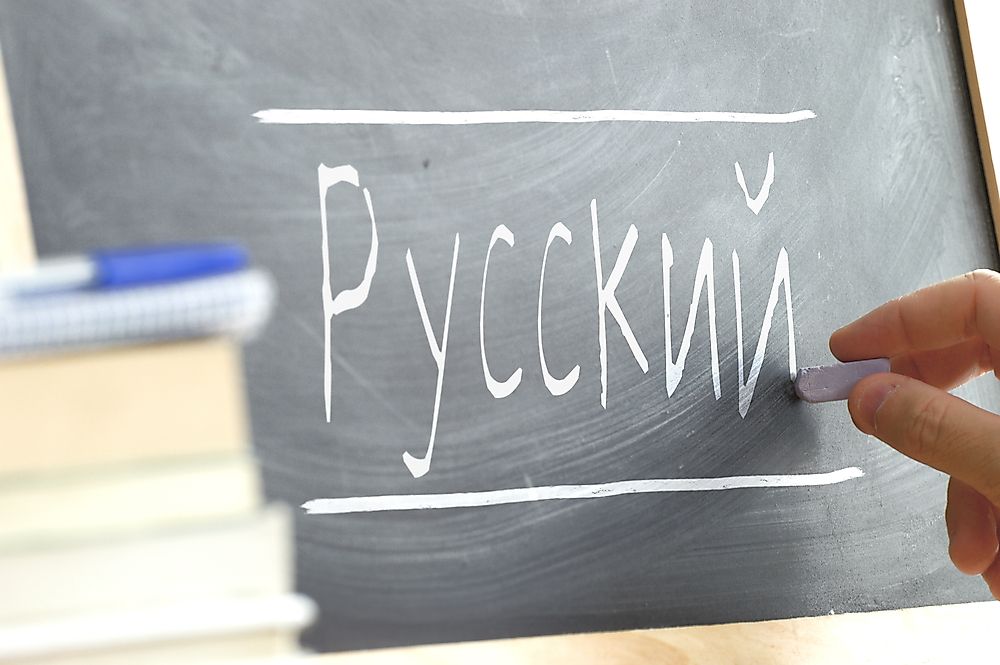What Are Slavic Languages?

The Slavic or the Slavonic languages refers to a group of languages used by the Slavic people, which all originated from the Indo-European language. The Slavic language is grouped into three categories of East Slavic languages which encompass Belarusian, Ukrainian, and Russian; the West Slavic languages which include Slovak, Czech, and Polish; and the South Slavic which include Bulgarian, Macedonian, Serbia/Croatian/ Bosnian, and Slovenian. The current distribution of native speakers of the Slavic languages covers the areas of Balkans, Central Europe, Eastern Europe, North and Northern Central Asia, and Russia. The total numbers of the speakers of the Slavic languages are estimated to be about 315 million people. All the Slavic languages are strongly related, but they are also distantly related to Germanic and other romance languages.
Russian
Russian is an East Slavic language. It is closely related to Belarusian, Ukrainian, and Rusyn. These languages are also spoken interchangeably in east and south of Ukraine and throughout Belarus. The Russian language has numerous lexical similarities with the Bulgarian language although they differ remarkably grammatically. The Russian language has native speakers in Russia, Kazakhstan, Belarus, and Ukraine among other former Soviet states. As of 2017, there were 154 million native speakers of the language and 265 million speakers globally.
Ukrainian
The Ukrainian language is the official language of Ukraine. The unrecognized state of Transnistria has the language as one of the three official languages, with the other languages being Romanian and Russian. Linguists believe that the Ukrainian language originated from the Old Slavic language, which was used in the early medieval Kievan Rus. The language has been used since the 17th century, and it is thought to be closely associated with Cossack Hetmanate. There are approximately 50 million native speakers of Ukrainian language worldwide, which include 37.5 million in Ukraine; equivalent to 77.8% of the total population. The Ukrainian language is widely used in the western and central part of the country. In the capital city of Kiev, the Russian and Ukrainian languages are common.
Polish
Polish is the most spoken Slavic language after Russian. There are approximately 50 million Polish speakers in the world, and it has earned a position as one of the official languages of the European Union. Aside from being the language of the majority in Poland, Polish is also spoken in other countries such as Lithuania, Ukraine, and Belarus. It is the most widely used minority language in Lithuania. As of 2011, there were at least 500,000 people in England and Wales who use the Polish language.There are other significant numbers of people of Polish origin in Canada, particularly in Montreal and Toronto.
Czech
The Czech language is one of the west Slavic languages of the Czech-Slovak group of languages. More than 10 million people speak Czech, and it is the official language in the Czech Republic. The language has a close relationship with the Slovak language, and they are mutually intelligible to a higher degree. The Czech language is a fusional language having a rich system of morphology and relatively flexible word order. The main vernacular language, which is also known as the common Czech language, is based on the vernacular of Prague, which is now widely spoken throughout the Czech Republic. The Moravian dialects are common particularly in the eastern part of the country, and they are also categorized as the Czech language, although some of the variants in the eastern part of the country are closely related to the Slovak language.
Bosnian/Croatian/Serbian/Montenegran
The Serbo-Croatian language is one of the South Slavic languages. It is widely used in Croatia, Serbia, Bosnia and Herzegovina, and Montenegro. The language is pluricentric, having four mutually intelligible variant languages. The language goes by Bosnian, Coatian, Serbian, or Montenegran.











